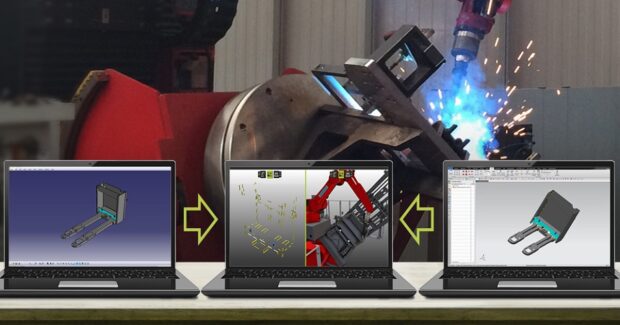From Design to Programming: The Automated Flow of Weld Information
FASTSUITE Edition 2 Software from CENIT automatically programs the welding path to exactly match the design and adjusts the weld seam position and tool path for changes in part sizes and process geometry.
Posted: October 21, 2019
“Increase your level of automation and you gain productivity” is the motto followed by most welding shops. This still rings true, but one of the biggest problems encountered by manufacturers who automate is the media disruption between departments: The intelligent data behind the 3D features being created by designers during the concept phase are not made available to the shop floor, resulting in days of downtime when a new variant needs to be produced. This problem can be solved by improving Variant management and Change management by reusing the data stored in the 3D master model with an automatic flow of information to the production manufacturing model – a solution that lies in the digital transformation of this process by FASTSUITE Edition 2 Software from CENIT North America, Inc. (Auburn Hills, MI), which constructs a 3D master with all necessary information available inside the 3D model so that the design department can automatically export the welding seams of the component, including the parameters created by the designer from the CAD system, into a neutral format where the data is digitized and passed on error-free with all necessary information about the weld seam.
All of this information can be directly imported in FASTSUITE Edition 2 Software, which automatically sets the weld seams and the associated parameters during programming. Manual definition is no longer necessary. The amount of work is considerably lower and the work quality much higher because the welds are exactly as intended by the designer. Quality in the overall process can be further increased by extending FASTSUITE Edition 2 to be customer-specific so that the position of the weld seam is automatically adapted to the tool path when changes are made to the component (e.g. length and/or width). This means that adjustments of the tool path to changed component sizes can be easily implemented and are also possible after importing the process geometry.
CENIT North America, Inc., 691 North Squirrel Road, #275, Auburn Hills, MI 48326, 248-309-3251, l.dochia@cenit.com, www.fastsuite.com.




